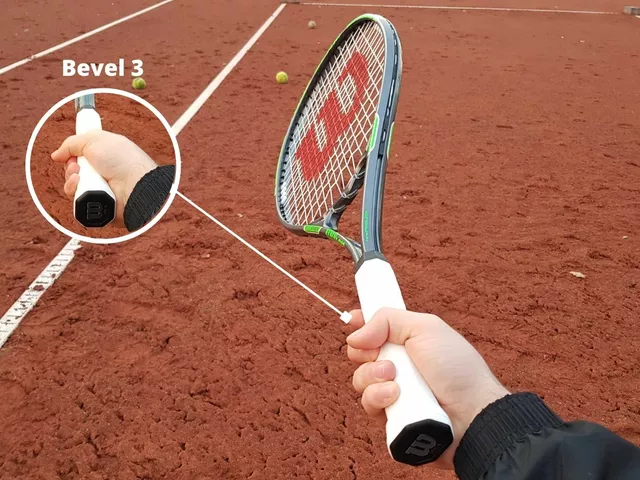Introduction: The Evolution of Tennis Grips
When we talk about the game of tennis, one aspect that has seen a significant evolution over the years is the style and preference of tennis grips. From the early beginnings of the sport to the fast-paced, high-intensity matches we witness today, the way players hold their rackets has changed dramatically. Let's dive into the history of tennis grips and explore how they've evolved over time.
The Continental Grip: The Birth of Tennis
The earliest popular grip in tennis was the Continental grip. This was the preferred grip for players in the 19th century and early 20th century. The Continental grip is ideal for a variety of shots such as the serve, volley, and slice. However, it fell out of favor when the game started becoming more powerful and players needed to put more topspin on the ball.
The Eastern Grip: The Transition Era
As tennis continued to evolve, so did the grips. The Eastern grip emerged as the next big thing in the mid-20th century. This grip allows players to generate more power and spin than the Continental grip, making it a popular choice among professionals of that era. It was during this period that tennis started gaining a wider audience and popular players like Bill Tilden and Helen Wills Moody dominated the courts with the Eastern grip.
The Semi-Western Grip: The Power Game
The Semi-Western grip came into popularity in the late 20th century and continues to be a favored grip among players today. This grip enables players to generate a significant amount of topspin, a critical aspect of the modern power game. Notable players like Andre Agassi and Serena Williams are known for their use of the Semi-Western grip.
The Western Grip: The Modern Era
In recent years, the Western grip has grown in popularity, especially among younger players. This grip allows players to generate extreme topspin, making it suitable for the high-bouncing, baseline game that is common in modern tennis. Rafael Nadal is one of the most notable practitioners of the Western grip.
The Two-Handed Backhand: A Revolutionary Change
The introduction of the two-handed backhand grip in the late 20th century was a game-changer. This grip provided players with more control and power on their backhand shots and has become a staple in the modern game. Players like Jimmy Connors and Chris Evert revolutionized the game with their two-handed backhands.
The Evolution of Grip Materials
Apart from the way players hold their rackets, the materials used for tennis grips have also evolved over the years. From bare wood and leather in the early days, to synthetic materials and overgrips in the modern era, the evolution of grip materials has played a significant role in how the game is played today.
The Influence of Player Style and Strategy
The style and strategy of players have been major factors in the evolution of tennis grips. As the game evolved from a serve-and-volley style to a baseline power game, so did the preferred grips. Whether it's the aggressive baseline game of today's players or the elegant serve-and-volley style of yesteryears, the choice of grip has always played a crucial role in a player's strategy.
The Future of Tennis Grips
As the game of tennis continues to evolve, so will the grips. New grips may emerge as players continue to push the boundaries of what is possible on the court. In the future, we may see even more variety in the grips used by professionals and amateurs alike.
Conclusion: The Enduring Importance of the Tennis Grip
From the Continental grip of the early years to the Western and Semi-Western grips of today, the evolution of tennis grips is a reflection of the evolution of the game itself. The grip a player chooses can greatly influence their style, strategy, and success on the court. As we look forward to the future of tennis, one thing is certain: the importance of the tennis grip will continue to endure.
